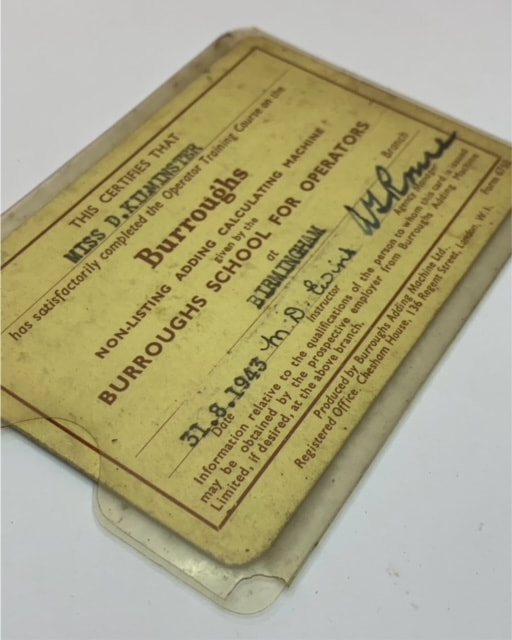The Burroughs Class 5 Calculator - Operator Training
The Burroughs Class 500 (Early machines) and Class 5 "key-driven" calculators were among the fastest adding machines ever sold. Invented first by Dore E. Felt in the 1880's, this type of machine was also built by the Burroughs Adding Machine Company starting around 1911. The speed of these machines was often compared to other printing machines, like the Class 8 "portable" adding machine and later the Series J Ten-key adding machine. Without exception, the key-driven machines were faster, when used by an trained operator.
The "Touch System" was the key methodology to be learned to gain the full speed possible on these machines. The following is a write-up of this method, as seen in a 1913 Burroughs Class 500 Operator's Manual:
THE TOUCH SYSTEM
"The best method where the machine is used constantly for addition, is for the operator to use the touch system. This is accomplished by using the lower half of the keyboard only from the 5 key down.
When a figure larger than five is to be added in any particular column, two smaller figures, the sum of which equals the larger figure, are struck in succession. Thus, to add nine, strike the 5 and 4 keys in the same column; to add eight, strike the 4 key twice in the same column; to add seven, strike the 4 key and the 3 key in the same column; to add six, strike the 3 key twice in the same column.
Begin by adding two columns at a time, using the first finger for the second column and the second finger for the first column. If there are more than two columns in the list, add the two right-hand columns first and then of back over the list and add the other columns. After a little practice it will be possible to handle amounts running up to five or six figures.
This method is unquestionably the most rapid and accurate. It takes considerable time to acquire proficiency in it, but the result is worthy of the effort. To begin with this system, the student should familiarize himself with the keyboard from the 5 key down. It is very important from the start and during all practice not to look at the keys. Until confidence is gained it is best to slip a blotter in the space between the rows of 5 and 6 keys so that the fingers will be confined to the lower part of the keyboard. This may be discarded in a short time.
The alternately concave and flat surfaces of the keys will greatly assist the student in acquiring the touch system. the first, third and fifth rows of keys have concave tops, the second and fourth rows of keys have flat tops; this enables one to tell instantly from the feel of the key just which key is being depressed."
The "Touch System" was the key methodology to be learned to gain the full speed possible on these machines. The following is a write-up of this method, as seen in a 1913 Burroughs Class 500 Operator's Manual:
THE TOUCH SYSTEM
"The best method where the machine is used constantly for addition, is for the operator to use the touch system. This is accomplished by using the lower half of the keyboard only from the 5 key down.
When a figure larger than five is to be added in any particular column, two smaller figures, the sum of which equals the larger figure, are struck in succession. Thus, to add nine, strike the 5 and 4 keys in the same column; to add eight, strike the 4 key twice in the same column; to add seven, strike the 4 key and the 3 key in the same column; to add six, strike the 3 key twice in the same column.
Begin by adding two columns at a time, using the first finger for the second column and the second finger for the first column. If there are more than two columns in the list, add the two right-hand columns first and then of back over the list and add the other columns. After a little practice it will be possible to handle amounts running up to five or six figures.
This method is unquestionably the most rapid and accurate. It takes considerable time to acquire proficiency in it, but the result is worthy of the effort. To begin with this system, the student should familiarize himself with the keyboard from the 5 key down. It is very important from the start and during all practice not to look at the keys. Until confidence is gained it is best to slip a blotter in the space between the rows of 5 and 6 keys so that the fingers will be confined to the lower part of the keyboard. This may be discarded in a short time.
The alternately concave and flat surfaces of the keys will greatly assist the student in acquiring the touch system. the first, third and fifth rows of keys have concave tops, the second and fourth rows of keys have flat tops; this enables one to tell instantly from the feel of the key just which key is being depressed."



